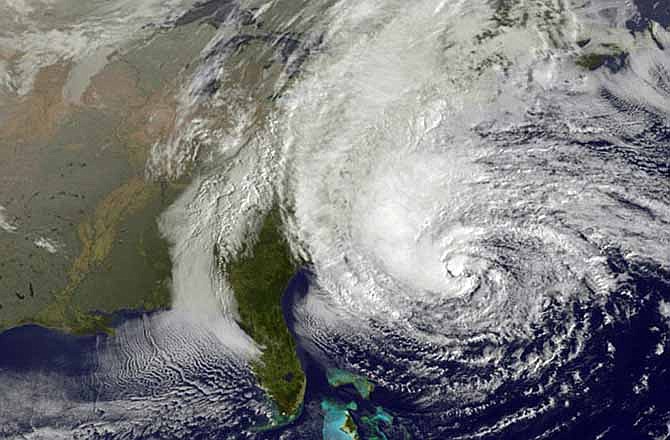NEW YORK (AP) - The Weather Channel had its third straight day of a round-the-clock vigil for the approaching superstorm, and the tone of its meteorologists turned more ominous Sunday with evidence building that their forecasts would come true.
The network is planning to live-stream its television coverage online so people in the eastern United States who lose power can keep up with the news on their mobile devices. The storm is expected to affect some 50 million people.
"We want you to know we are not hyping this storm, OK?" on-air meteorologist Vivian Brown said. "We don't do that at The Weather Channel because we want you to be alert and aware."
Other television networks mixed news of Hurricane Sandy with stories like the presidential campaign. In New York, the local CBS outlet ran a split screen with New Jersey Gov. Chris Christie delivering a storm briefing Sunday afternoon and the New York Jets' game against the Miami Dolphins.
But Hurricane Sandy, which is mixing with other weather systems to create a storm of unprecedented strength in the region, kept the undivided attention of The Weather Channel.
The network's Julie Martin, stationed on a beach in Nags Head, N.C., looked increasingly weary of the wind and rain as she described the storm's staying power in a series of live reports.
Meteorologist Jim Cantore, the network's most visible personality, said it was unlike anything he'd ever seen or covered. He had to take a brief break from his live reports from New York's Battery Park City to move his belongings because his hotel had been evacuated; his publicist's apartment was also in the evacuation zone.
Bryan Norcross, the network's senior hurricane specialist, explained in an interview that the network tries to keep its tone serious yet urgent. The network's computer models have been consistent in their forecasts of the storm and it has been acting as anticipated, perhaps with even more strength.
"Our goal has been to get people to appreciate the magnitude of the storm and try to prove to them that, based on everything we know, that this is going to be a system that is outside of their experience," Norcross said.
The Weather Channel sent a message via Twitter calling it "an extraordinary storm, an extremely serious threat" and urged followers to re-tweet it. The storm "will occupy a place in the annals of weather history as one of the most extraordinary to have affected the United States," the network tweeted.
Quickly, the Business Insider tweeted: "WHOA. The Weather Channel meteorologist just completely freaked out."
Twitter filled with messages of concern for people in its path, as well as a few oddities. Comic Ricky Gervais made an unprintable suggestion as a joke, while media mogul Rupert Murdoch tweeted: "Eerie feeling, but kids getting ready to celebrate no school."
ABC News posted a blog of storm-related news, while another Twitter message contained links to live webcams where computer users could track the storm's progress.
Cosmopolitan magazine tweeted advice for "how to cut your bangs at home (because if you're going to be house-bound for Sandy, why not?)." ''Sesame Street" offered a hurricane toolkit to help children understand what's going on.
Judging by The Weather Channel, there were also people who saw a business opportunity. There were frequent commercials from companies that make generators for people to keep electricity going in their homes if the power lines go down.
Partly to underline the seriousness of the situation, The Weather Channel has refrained from using the "Frankenstorm" nickname coined by the National Oceanic and Atmospheric Administration last week when the storm was a model on its computer forecasts.
"Being cute about this storm is not the right idea," Norcross said.
Online:

